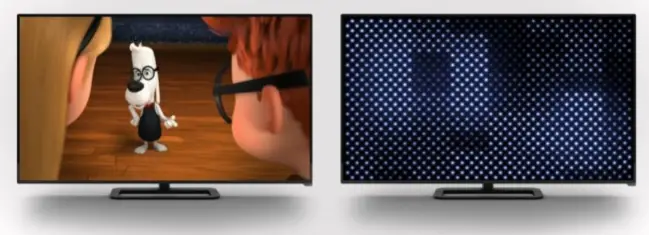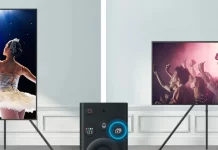There are only two types of backlight, direct and with the edge of the screen. All other names are the marketing name of the standard highlight types.
Types TV Backlight
In the description of the technical characteristics of TVs you can find the use of various types of backlight EDGE and DIRECT, as well as technology for dimming the screen (Dimming), which we will consider. A little about the backlights in LED TVs, to see the image you need to place a light source at the back of the screen. TV backlighting is done by diodes. From how they are placed and the type of backlight changes.
Direct led vs Edge led backlight
Direct led vs Edge led – Of course, the Direct LED backlight is much more efficient, as it allows you to control the backlight on the TV. Significantly improved image quality. Televisions in the upper price range use only Direct Led backlight. The matrixes of screens are made with support for controlling the backlight LEDs by zones. Produced models of screens in which the backlight can be divided into more than 200 zones.
It is generally accepted that direct illumination is better than backlighting from the edge of the screen. Nevertheless, factories produce more screen matrices with backlighting from the edge of the screen. Maybe it’s cheaper.
FALD backlight screen
FALD – (full-array local dimming), 2018 LG decided to build an advertising company to promote TVs in the markets, with the abbreviation FALD. Although the TVs with this backlighting are produced from 2012 and it was called Direct LED. A banal marketing move to present your products in a more favorable perspective. The advantages of this backlighting technology are the ability to apply the backlight off by sections, which makes it possible to get a deeper black color on the screen. As a rule, the backlight LEDs are assembled into groups (zones) and turn off the illumination by sections, such zones can be several dozen.
LCD backlight screen
LCD – the first name of flat liquid crystal screens, the backlight of the screen was realized by special lamps, they were placed behind the screen or on the side along special optical fibers, the light flux was directed to the screen.
LED backlight screen
LED – instead of lamps for the backlight began to use LEDs. This was a new solution, LEDs reduced power consumption. And also it became possible to turn off the backlight of a part of the screen. The thickness of the TV also decreased.
Direct LED backlight screen
Direct LED – LED lights positioned in the entire area of the screen, the advantages of the possibility of using local dimming, a disadvantage is a large TV thickness. This technology is used in television sets of various series.
EDGE LED backlight screen
EDGE LED – The screen is backlighted by LEDs located on the side of the screen, the advantages are the thickness of the TV less. The disadvantages include: you can not use full local dimming.
LED Plus backlight screen
LED Plus – the same EDGE LED only realized the possibility of local dimming, but not in small areas, but in large ones, for example, either the left or right area of the screen.
NANO Full LED backlight screen
NANO Full LED – the same Direct LED but as they say in the scattering layer added microparticles, which makes the backlight softer. But in principle, this is simply a marketing move of the company.
So there are only two types of highlighting Direct and EDGE. All other names are improvements to the backlight. Namely, the implementation of the ability to control the backlight focusing on the displayed image. Also, let’s not forget marketing, if even on TV nothing has changed, then inventing a new name for the screen backlight, an increase in sales of televisions is achieved.
When choosing a TV, you need to focus on the type of backlight. Also, TVs with Direct backlight and the ability to control the brightness of the backlight, depending on the image on the screen, will show a better image.








